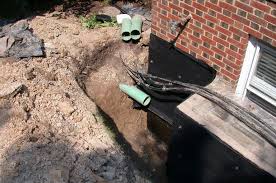Different Waterproofing Methods: Choose the Right Method for Your Basement

Does your basement leak? The ultimate solution to this issue is basement waterproofing. This technique is vital to keep the basement mound-free and dry. This further avoids structural damage to the foundation of your home.
To resolve this, waterproofing contractors provide the best service to help you with the best waterproofing services for a clean basement.
What is basement waterproofing?
Basement Waterproofing is a treatment method to avoid the water from leaking. A waterproofing system must ideally be elastic, tear-resistant, watertight, strong, flexible, and reliable, letting it cover cracks and move with the building packet’s typical cyclic movement.
Sounds great right now; let’s look at major approaches which bring you effective solutions for a dry basement. Say Goodbye to moisture, seepages, leaks, molds, flooding in your basement, and a welcome sweet-smelling smell and a clean floor.
When it comes to Basement waterproofing, there are numerous factors that one has to consider, like where the house is situated, how is all the drainage foundations built, underground depth, and many more. Getting in touch with the right waterproofing specialists will help you save a lot of time and money when it comes to spending. One is certain to get effective interior and exterior waterproofing solutions that best fit your budget is durable in nature and even safe.
What Are the Different Types of Waterproofing?
-
Interior Waterproofing:
Making an open space in your basement with an inner drainage waterproofing technique is known as internal waterproofing. It is the best option for a moist basement since it prevents leakages from inside your foundation. When you notice that your basement is becoming wet and moist, it’s perfect to fit an inferior draining system to avoid the growth of mildew and mold, which causes unpleasant smells and bacteria growth that are unsafe to your health. It is done by fitting pipes in the basement walls to carry water away from your foundation.
Suppose you want an effective and durable solution. In that case, we recommend you go for inferior draining as it is quite appealing to customers because of its less disruptive and cost-effective nature.
Benefits of interior basement waterproofing
- Interior waterproofing causes minor disturbances to the outside of the house.
- It decreases halts and wall seepage of the floor without totally eliminating finished walls. Hence, it is more cost-effective.
- The water is effortlessly directed outside with the help of a discharge pump when the hydraulic pressure is released.
- The best thing about interior waterproofing is that the procedure taken place regardless of any weather condition.
-
Exterior waterproofing:
When it comes to dumping basements, the cause of the problem is usually outside the house. While basement waterproofing, it’s very vital that look beyond the walls. Waterproofing on the outside is generally a bigger job than just sealing we do from the inside. Exterior Basement Waterproofing includes coating polymers and membranes on the walls to get safety from moisture or leaks. If you want to get rid of mildew and mold. In that case, choosing exterior waterproofing is the best solution. It significantly decreases the area for mold growth. It even safeguards your structure from further damage by limiting the flow of humidity and preventing termites from gaining entry and causing destruction. With its benefit, it comes with a few disadvantages attached.
That’s why while choosing an external waterproofing; it’s better to take suggestions from the waterproofing expert as it costs more than the interior waterproofing and is even quite disruptive. In addition, it comprises the diggings of soil around the foundation, which is laborious and riskier.
Don’t wait any longer for your basement to get stinky or release unwelcome gases which are hazardous to one’s health and wellbeing. Instead, choose a waterproofing service immediately to eliminate basement water blockage issues.
Benefits of external basement waterproofing
- The basement inside is likely to get less disturbed.
- The homeowner has nothing to do with the groundwork except if there is any necessity for landscaping elements to be relocated.
- The best thing about external basement waterproofing is that it retains your house resistant to water by putting an exterior sealant.
Maintenance
As a homeowner, you must regularly check your foundation for possible water problems:
Inspect doorways and windows that are lower than the ground level for splits or cracks in the frames.
Checking your eavestrough and gutters to keep them clean is a must. Also, make sure the downspouts are leading water away from the foundation of your house.
If there are trees and other landscaping structures too close to the base of your foundation, their root systems can damage the external layer of concrete on your house wall and make a path for water to gain entry into your basement.
Check the slope of you’re and your neighbors’ property too. A little work together prevents your homes from getting damaged by water.
The key rule to keep in mind is that if your basement has water and you don’t get it waterproof, be sure to have it again and again.
Not only does exterior waterproofing of your basement safeguards you and your belongings, but it also enhances the value of your property. In addition, when you decide to sell your home, future buyers are confident of the durability of your foundation when they’ll know it is fully waterproof.
If your house shows signs that it needs basement waterproofing, opting for the right basement waterproofing solution that fits best for you eventually comes down to two major things: the source of the problem and your budget. And based on the severity of the issues, many homeowners choose temporary fixes but often end up installing a drainage system that effectively fixes the basement water problem.






